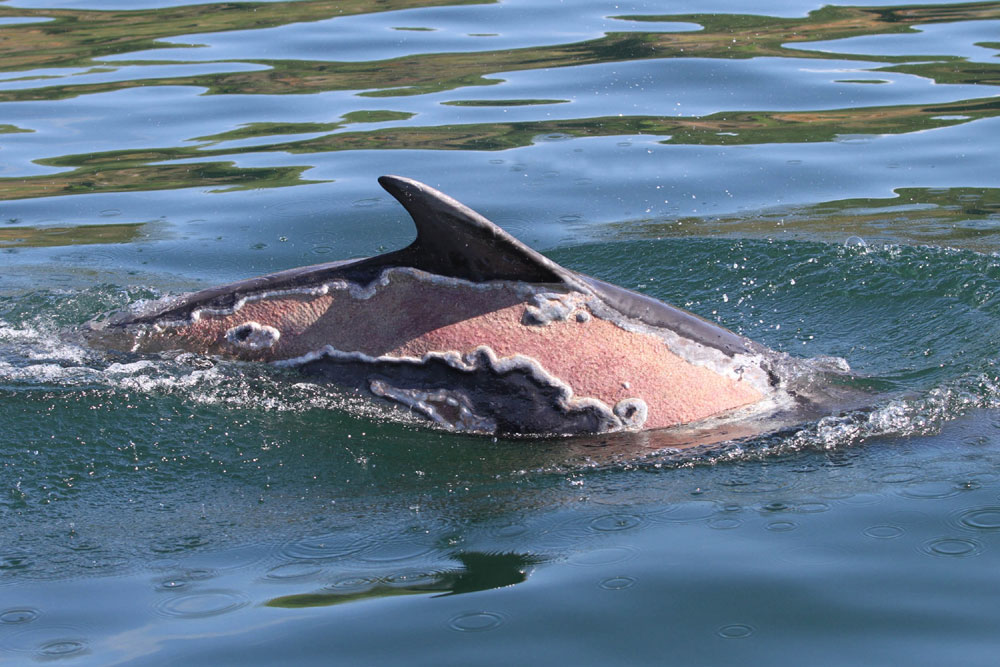GRUESOME images show the horrifying effects of sunburn on a dolphin – weeks after she was rescued from a Scottish beach.
Spirtle, a four-year-old bottlenose, made headlines last month after a sat-nav blunder led to her being discovered washed up on an Aberdeen bay.
The lucky mammal was saved after passers-by called the SSPCA, who tried to save her from sunburn by using damp towels during the 12-hour rescue .

Spirtle was recently spotted about 150 miles away by sea in the Cromarty Firth.
She was playing and chasing fish but still bears the horrific scars from where her skin blistered in the heat.
The snaps, taken by scientists at Aberdeen University, show the outer layer of rubbery skin burnt off, with a new, pink layer growing underneath.
Despite the ghastly appearance of the wounds, experts are confident that the youngster is doing well and will continue to heal as she plays in the salty waters of the Cromarty Firth.
Barbara Cheney, a researcher with the University’s Lighthouse Field Station, said: “We saw her last Thursday for the first time since she live-stranded and was re-floated.
“The damage on her right side is likely caused by sunburn, UV damage and dehydration during the stranding but her left side is normal.
“The edges of it seem to be healing and we hope this will continue. She appeared to be swimming well though favoured her right side when she surfaced.
“We will be keeping a look out for her and monitoring the progress of the damage.”
Marine mammals are more susceptible to sunburn than most other creatures, which have either fur, feathers or scales to protect them from the sun’s UV light. Elephants and rhinos deliberately cover themselves with a mud “suncream”.
Dolphins and whales simply have to rely on being underwater for much of the time to combat the effects of the sun.
Remarkably, hippos produce their own suncream – a pinkish liquid that wells up in droplets on their faces or behind their ears and necks. These droplets have red and orange pigmentation that absorbs light in the UV range.
Previous pictures of Spirtle showed her close to death after being stranded on the beach at Nigg Bay in Aberdeen.
She was discovered by visitor Lorraine Culloch, from Arbroath, after her sat-nav took her the wrong way and she ended up at the beach.
After spotting the animal in distress, she called the SSPCA and the British Divers Marine Life Rescue (BDMLR) team to come and help.
Photographs taken of Spirtle at the time showed the exhausted animal, struggling to breath with damp towels draped over her to try and protect her skin from the sunshine.
Lorraine said she was being pecked by seagulls when she arrived, and already had blisters down one side of her body.
Other pictures, taken later that day, show the lucky mammal being guided back into the sea by rescuers – a mission that took over 12 hours long.
During the rescue, vets were able to identify the dolphin as four-year-old Spirtle, who had been seen playing in the sea just days before.
Last year she was separated from her mother, Porridge, after she had a new calf who needed more attention.